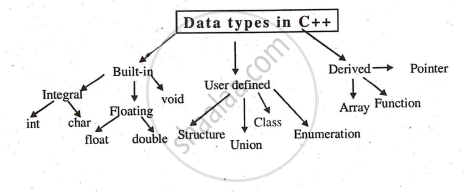Topics
Number Systems
Program Analysis
Introduction to C+ +
- Introduction to C++
- Character Sets
- Standard I/O Strems in C++
- Type Modifiers
- C++ Data Types
- Variables in C++
- Constants
- Compiler Tokens
- Operators in C++
- Comments in C++
- Scope and Visibility
- Control Statements
- Functions in C++
- Default Arguments
- Techniques used to pass Variables into C++ Functions
- Function Overloading
- Inline Functions
- Recursion
- Pointers in C++
- Arrays in C++
- References
- Type Conversion in Expressions
Visual Basic
- Introduction to Visual Basic
- One language Three Editions
- Study Of Integrated Development Environment (IDE)
- Visual Basic Programming
- Few Common Methods
Introduction to Networking and Internet
- Introduction to Networking and Internet
- Networking Terms and Concepts
- Types of Networks
- Network Security
- Network Configurations
- Network Applications
Introduction to C++
For decades, C has been widely used due to its power, simplicity, reliability, and portability. However, as programs grow larger, C's structured approach can struggle. To address this, Bjarne Stroustrup developed C++, an extension of C that includes Object-Oriented Programming (OOP) features, enhancing maintainability and reusability.
Getting started
To write a C++ program, you need a text editor to create and edit source files. IDEs like Turbo C++ and Borland C++ offer integrated development environments with built-in editors and menu options for file management, editing, compiling, and running programs.
Data types
The following chart shows different data types in C++:

Data types in C++ can be classified into three categories:
- Built in type: Built in type is also called as Basic or Primary data type. There are five basic data types.
- User defined type: The user defined data types are defined by the user in the programs as per the need of the programmer. This feature of adding own data type makes C++ an extensible language.
- Derived type: The Derived data types are also called structured data types or secondary data types. They are formed by using basic data types of the language. Array, Function, Pointer are derived data type
If you would like to contribute notes or other learning material, please submit them using the button below.
